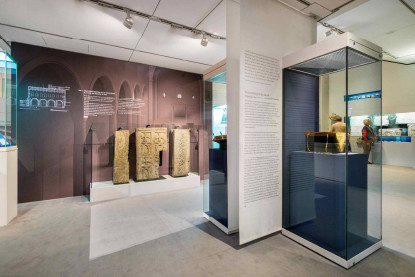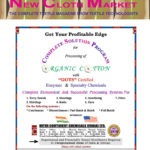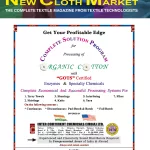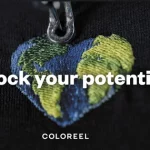Bückeburg (Germany) based Neschen AG develops, produces and markets innovative coated self-adhesive and digital print media worldwide, together with their processing machines and presentation systems. The graphics product portfolio ranges from finishing, protection and mounting films to print media which can be used with modern digital printing technology for avant-garde architecture, decoration and advertising. The Bückeburg supplier is the first address for printing service providers, architects, designers, photographers, interior decorators and advertising agencies. The business unit Graphics also includes powerful laminating machines and high quality display systems.
Neschen’s documents sector comprises self-adhesive films and papers for the protection, repair and care of books. Libraries, archives and museums can also obtain the necessary working materials and processing equipment from Neschen.
Based on more than 40 years experience with special coating methods, Neschen Technical Coatings also offers industrial customers in all branches fully customized solutions. These range from surface finishes in the automotive industry to different coating technologies up to 2050 mm on a wide range of substrates such as films (PVC/PET/PP/PE/PU/PMMA etc.); paper, non woven; foams, and fabrics. Neschen AG has production facilities in Germany and the US.
One of Neschen’s specialist areas is the pattern coating of adhesives, functional varnishes and other high-quality functional coatings. These coatings are not just available in the form of the usual complete-surface applications, but can also be applied in various structures or patterns. By using this special type of coating, users may be able to reduce material or processing costs, cut down on working time and save resources. An example for Pattern Coating is illustrated here.

A perfect illustration : the suspended banners with the explanatory notes and maps accompanying the exhibition. (Photo: Wolfgang Noltenhans)
Last year an exhibition themed “CREDO – Christianization of Europe in the Middle Ages” was held at Diocesan Museum · Imperial Palace · Municipal Gallery in Paderborn, Germany from 26 July to 3 November. The exhibition depicted “How did Europe become Christian?” in great details. The accompanying text was provided on suspended banners made of Neschen’s “solvotex cotton premium light S”, a 100% cotton fabric with a premium inkjet coating.
The organisers wanted a white surface resembling concrete as a background to the texts. For this, the fabric banners were printed across their entire width. The printing job was carried out by RLS jakobsmeyer GmbH in Paderborn. The visible white tone was produced with the HP latex ink.
The printed Neschen media at the Diocesan Museum were suspended from the ceiling using Velcro. The cotton banners were cut along the sides, so to ensure they retained their shape an aluminium rail was inserted into the hemstitch to weigh them down.
The white fabric solvotex cotton premium light S consists of 100% cotton and weighs approximately 230 g/m², including premium inkjet coating. Competitively priced, it offers very good print quality and exceptional colour reproduction and brightness. solvotex cotton premium light S is suitable for (Eco-) solvent- and UV-curable as well as latex inks and can be printed with individual motives by means of the inkjet method. It is available in widths of 310 cm and 505 cm and a length of 50 m. A B1 test certificate according to DIN 4102-1 has been issued for indoor applications.
Processing Instructions for Textiles :
Textile fibres
Natural fibres : cotton, silk (viscose) and linen
Synthetic fibres : polyester (modified polyester Trevira® CS) and polyamide)
The thickness of the textiles, and the way in which they are spun, determine the strength and weight of the material. Cotton textiles are made of natural fibers and have a slightly rough surface. Various weaving defects are sorted out in the manufacturing process and, generally, fuzz is eliminated by singeing. Despite these quality control methods, small weaving defects and individual fuzz spots cannot be completely eliminated and do not constitute grounds for complaint. Synthetic textiles have a smooth, slightly shiny surface. Rough defects are sorted out during product inspection. Small defects are normally flagged.
The German textile industry has unilaterally set a tolerance for defects. This tolerance allows for a maximum of 10 defects per 100 meters (328 feet). These defects must however also be differentiated. For example, some defects are very small stains or slight discolorations which are unnoticeable after printing and do not represent a defect which counts. Others are knitting defects or larger stains. In general, single defects should not be longer than 1 meter.
Defect tolerances :
Defects in textile manufacturing cannot be avoided. All defects, which fall outside of the agreed upon normal range, are sorted out during the material control. Complaints are not accepted for knobs, yarn breakage, thick and thin areas, fuzz and hanging threads from 5 to 10 cm in size.
The following tolerances are to be accepted according to §7, number 3, German Unit Conditions :
- differences in length + / – 3 %
- differences in weight + / – 3 %
- differences in width + / – 1 – 2,5 %
- tolerance at bias + / – 1,5 % at the fabric width
- post-treatment shrinkage + / – 3 – 5 %
- after washing fabric can shrink + / – 1 – 3 %
- difference in fibre composition + / – 5 – 10 %
- difference in colours, e.g. degree of whiteness
Material should always be closely observed during printing to avoid any eventual damage to the printing head. To eliminate the possibility of a material jam, the printing head should not be set too close to the material. Hemmed material is printed on at your own risk as the thicker edges represent a jamming risk.
Weaving and knitting
Weaving : 2-thread system (warp / weft)
Knitting : 1-thread system (only warp)
The surface of the material is characterised by the way of weaving or knitting. Depending on the arrangement of warp and weft the certain surfaces can be achieved. The most popular surface structures/bonds are :
Satin : a shiny, smooth textile; Nettle : a straight canvas bond (1 thread up / 1 thread down – warp / werft) with a symmetrical surface; Canvas : a heavy nettle fabric (e.g. painting); Twill : a tight canvas bond with diagonal lines (e.g. jeans).
Ennobling
Further processing steps give the material its final characteristics. The final features are achieved through a variety of ennobling steps. The most important of these steps for digital printers are the following :
- surface handling: shiny/matt appearance
- flame resistant treatment
- coating to optimise the printing characters
- improvement of run feature in the printer
- airtight coating for vacuum tables
Processing
The following should be considered when processing printed textiles :
Cutting : Cotton textiles can be cut very well with commercial textile scissors. Can be torn very easily after an initial cut. Synthetic textiles (out of polyester or polyamide), e.g. Trevira® CS – can be best cut with a hot cutting machine. The edges melt neatly without loose threads. These materials cannot be, or are very difficult to tear. Textile glass should only be cut by specially equipped companies as splintering of small glass particles occurs which can cause skin irritation.
Sewing/hemming : The quality of the yarn should match the quality of the textile to be processed :
cotton textile = cotton yarn
synthetic textile, like Trevira, polyester, polyamide = polyester yarn
silk = silk or cotton yarn
cotton/viscose = cotton yarn
textile glass = polyester yarn/glass yarn
If a cotton textile is sewn with a polyester yarn and the finished product is washed, the cotton material will shrink by approximately 3% while the polyester yarn will not shrink at all. This will result in crinkling at the seams. Furthermore, the strength of the yarn should correspond to the thickness of the material and the area of application. For outdoor use, such as a flag, “Gore” yarn should be used. This yarn is very sturdy and also heat-resistant.
The folding properties of the material should not be ignored when sewing. Thick coated textiles, such as canvas, should not be hemmed as the coating will tear. Furthermore, the thick, coated material has relative sturdy edges.
Interlining fleece : This is a self-adhesive fleece material which is ironed onto the hem to strengthen the edges. A white fleece is recommended for light prints and a black fleece for dark prints. Larger surfaces should be seamed which is quicker and more economical than interlining.
Eyeletts + webbing : A webbing needs to be sewn into the hem before punching holes for eyelets. This is necessary to avoid ripping out the eyelet. The webbing material has to match the textile material, i.e. cotton material = cotton webbing, polyester textile = polyester webbing, thick textile = strong webbing etc… Most webbing material has a width of 4cm. Please note : eyelets should always be placed in the middle of the webbing.
Ironing : When ironing, textiles should be treated the same as clothes, i.e. higher temperatures for cotton (2 to 3 points) and lower temperatures (1 point) for polyester. To reduce the chance of polyester material melting, we recommend that you lay a cloth over the material before ironing. Some creases can be removed from cotton with steam alone. If the creases are not to pronounced then they can be steamed and then left to dry. Canvas and other synthetic coated material, such as Solvotex, may not be ironed due to their coating.
Washing/Cleaning : Flame-retardant textiles lose their flame-retardant properties when washed or cleaned thus voiding their guarantee. Cotton materials may also shrink when washed. All textiles may washed only with water (without chemicals).
- Trevira® CS textiles retain their flame-retardance after washing.
- Canvas can not be washed due to its coating
- Solvotex all Products can be washed chemical- free at 30 °C, when the colors are bonded with the textile (scratch resistance). Polyester and Trevira® CS products can be shrink a little bit. Cotton shrink more than them. If you wash Polyester and Cotton products the flame resistance could be lost, colors can bleach and cotton can lose its from.
- Printex all Printex products are non-washable
- DYEtex all DYEtex products are washable and suitable for outdoor use, but loose their flame-retardent characteristics
Storage
- Rolls should always be stored lying flat to avoid damage to the ends. The complete length of the roll should have floor contact. This prevents pressure marks and hanging of the product. Textiles must be packed and stored in a dry, climate-controlled environment to prevent the absorption of moisture.
- All textiles should stored packed in climate-controlled and dry rooms, to avoid moisture absorbtion from the ambient air. The ideal room temperature is between 18 and 22°C, the ideal air humidity between 30 – 60%.
- In case the material is stored or processed outside the prescribed temperature and humidity conditions it is necessary to remove the film packaging and let the material acclimatize for 8-24 hours before processing.
- In case the material is exposed for a prolonged period ( about 2 weeks or more) to low humidity and temperatures below 10°C, we recommend to acclimatize the unpacked material for 48-72 hrs before processing.
- Final convert prints should stored and shipped rolled if possible, to avoid breaks and cracking. They should stored packed in climate-controlled, dry rooms also.
Neschen AG Offers :
Coatings : Water-based dispersion adhesives (permanent and reversible), clear, pigmented, functional coatings made from aqueous solutions (e.g. also heat-activated). Also, contract work for complete surface applications or for specific zones as defined by the customer e.g. circles or other geometric shapes, lettering or logos.
- Application weights : from under 5 g/m² to over 80 g/m² Materials: PE, PP, PU, PVC, paper, PET, textiles, fleece fabric.
- Thickness : 10 – 500 µm Widths : up to 2000 mm.
- Manufacture : narrow reels and short reels, delivery of master reels on 3” and 6” cores.
- Covering : single-colour print backing paper, release behaviour geared to the adhesive system.
Contact details :
Neschen AG
Hans-Neschen-Str. 1 D-31675 Bückeburg, Germany
Tel.: ++49 (0) 57 22 20 7-333 Fax: ++49 (0) 57 22 20 7-167
E-Mail: your.solution@neschen.de Website : www.neschen.com







